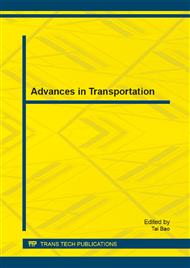p.778
p.782
p.787
p.794
p.798
p.805
p.809
p.813
p.820
Study on Transportation Development Mode Selection for the Growth of Employment in City Center - Case Study of the Expansion of Financial District in Beijing
Abstract:
Urban expansion and development has brought the growth of employment centers. How to meet the needs of employment travel activities with transport services becomes a bottleneck restricting urban development. Setting the expansion and development of Beijing financial district as an example, this article systematically sorts out the relation between urban form and selection of transportation development mode. A travel demand forecasting model is set up to predict travel demand triggered by the employment centers concentration. Through scenario analysis of traffic patterns, the article analyzes the matching transportation development direction, and proposes metro transit as the only solution to traffic demand of the financial center. On the basis of analyzing metro transit need, it puts forward a further plan of metro transit lines, and measures such as corresponding car control, and green travel guide. The research findings will provide support for the development of financial centers, and reference to more cities that facing the growth of employment centers.
Info:
Periodical:
Pages:
798-804
Citation:
Online since:
January 2014
Authors:
Price:
Сopyright:
© 2014 Trans Tech Publications Ltd. All Rights Reserved
Share:
Citation:


